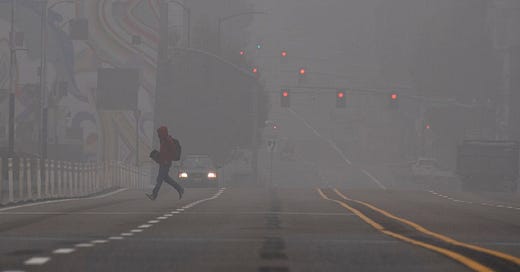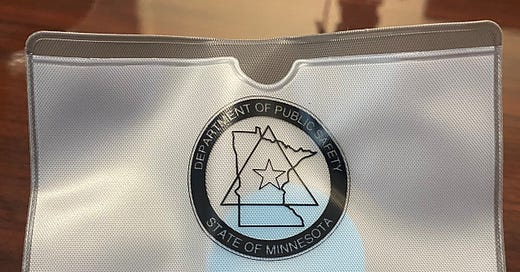Municipalities are banning natural gas hookups in new homes over respiratory health concerns. Toxic wildfire smoke is sending thousands of Americans to the hospital. Fine particle pollution has been linked, in multiple studies, to greater rates of Covid-19 mortality. Researchers estimate that dirty air causes north of 100,000 annual premature deaths in the United States alone, and millions more worldwide. Seemingly every day a new study comes out describing health, social and economic impacts of air pollution that are even worse than suspected, and happening at levels well below what regulators had previously deemed harmful.
This month, The Why Axis will be digging into the relatively new and rapidly-growing body of research on dirty air and what it’s doing to us and the planet we live on. It’s a topic that, as the New York Times’ Binyamin Applebaum recently pointed out, often gets overshadowed by interest in global warming. While the two share considerable overlap, there’s a strong case to be made that it’ll take decades for carbon dioxide to cause as much direct harm to humans as other airborne toxins are doing right now.
“Warnings about climate change are predictions,” Applebaum writes, “and even if they are taken seriously, people may be indifferent to the quality of life in 2100, or at least unwilling to do anything about it. They might be more motivated to save their own lives.”
While CO2 gets much of the press, other aerosolized pollutants are quietly wreaking havoc on our lives. Fine particulate matter from wildfires and fuel emissions is wrecking our hearts and lungs, hampering our cognition and likely driving increased rates of Alzheimer’s disease, Parkinson’s and dementia. Nitrogen dioxide from gas appliances like stoves and furnaces is literally making it harder to breathe in our homes, causing childhood asthma, and contributing to low birth weight among newborns. Lead from fuel still used by the airplane industry continues to damage the hearts and brains of American kids. And in poorly ventilated conference and classrooms across the nation, people are choking on the stale breath they exhale.
Thanks to regulatory efforts, the air in the United States is remarkably cleaner than it was just one or two generations ago. That’s an undeniable win for public health, reflected in no small part in our growing life expectancies over that same period. But in recent years, thanks to the work of researchers all over the world, we’ve begun to realize that airborne pollutants are continuing to do serious, measurable harm even at levels once thought to be safe.
Given the severity of the effects and the rapidly evolving research into the problem, air pollution is a topic that demands sustained journalistic attention. It’s also something I’ve covered now and again. At the Post, for instance, I covered the links between fine particle pollution and worker productivity, the relationship to dementia and overall mortality, and the lesser-known effects of carbon dioxide in the workplace.
But now seems like a good time to really sink my teeth into the topic — particularly as the latest data shows that decades of progress on cleaning the air has now stalled, and may even be reversing. In the coming month I’ll be presenting some basic, big picture overview data on pollution trends and levels across the U.S. and the world. I’ll be looking at the latest research on air quality in our homes and offices, and what it’s doing to us over the long term. And I’ll be making a ton of charts and maps to put it all into context.
So I encourage you to subscribe now, if you haven’t already, so you don’t miss any of this. The first piece, later this week, will dig into a fascinating recent study that really underscores how our understanding of dirty air and its effects on human flourishing is just in its infancy. That study’s main finding: children’s educational achievements today are directly affected by the amount of air pollution their grandmothers were exposed to.
Stay tuned!













A horror of the air situation is that we can probably expect the current Supreme Court to do away with the power of the EPA to regulate ...
Thank you for doing this work.
The Republican powers that be in Indiana decided to build a new interstate highway running north-south instead of fixing the roads already in place. (The destruction of trees and natural habitats has been astonishing and gut-wrenching.) The mayor of the town I currently live in fought hard to have the freeway put right through the middle of town, complete with 3 huge on/off ramps - all in a town of 12k. The noise, light and air pollution levels here have significantly increased. (The once beautiful geography of the town has been destroyed as well.)
I’ve had trouble with the increase in fine particle pollution and have been researching it myself. I look forward to your work on this subject.